| Listing 1 - 10 of 28 | << page >> |
Sort by
|
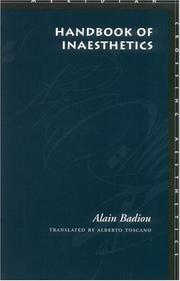
ISBN: 0804744084 0804744092 Year: 2005 Volume: *4 Publisher: Stanford Stanford university press
Abstract | Keywords | Export | Availability | Bookmark
 Loading...
Loading...Choose an application
- Reference Manager
- EndNote
- RefWorks (Direct export to RefWorks)
- - Art and philosophy ##- - What is a poem?, Or, philosophy and poetry at the point of the unnamable ##- - A French philosopher responds to a Polish poet ##- - A philosophical task: to be contemporaries of Pessoa ##- - A poetic dialectic: Labîd ben Rabi'a and Mallarmeʹ ##- - Dance as a metaphor for thought ##- - Theses on theater ##- - The false movements of cinema ##- - Being, existence, thought: prose and concept ##- - Philosophy of the faun.
Aesthetics. --- Aesthetics --- Beautiful, The --- Beauty --- Esthetics --- Taste (Aesthetics) --- Philosophy --- Art --- Criticism --- Literature --- Proportion --- Symmetry --- Psychology --- Radio broadcasting Aesthetics
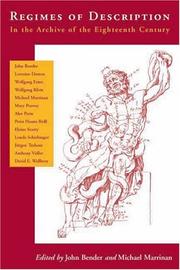
ISBN: 0804747415 9780804747417 0804747423 Year: 2005 Publisher: Stanford Stanford University Press
Abstract | Keywords | Export | Availability | Bookmark
 Loading...
Loading...Choose an application
- Reference Manager
- EndNote
- RefWorks (Direct export to RefWorks)
Aesthetics --- Description (Philosophy) --- Philosophy --- Beautiful, The --- Beauty --- Esthetics --- Taste (Aesthetics) --- Art --- Criticism --- Literature --- Proportion --- Symmetry --- Psychology --- Radio broadcasting Aesthetics

ISBN: 1503601668 9781503601666 0804744084 9780804744089 0804744092 9780804744096 Year: 2005 Publisher: Stanford, Calif. Stanford University Press
Abstract | Keywords | Export | Availability | Bookmark
 Loading...
Loading...Choose an application
- Reference Manager
- EndNote
- RefWorks (Direct export to RefWorks)
Aesthetics. --- Beautiful, The --- Beauty --- Esthetics --- Taste (Aesthetics) --- Philosophy --- Art --- Criticism --- Literature --- Proportion --- Symmetry --- Psychology --- Aesthetics --- Radio broadcasting Aesthetics
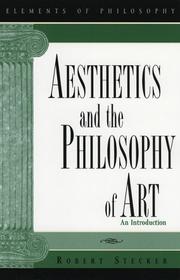
ISBN: 0742514609 0742514617 9780742514607 9780742514614 Year: 2005 Publisher: Totowa Rowman & Littlefield
Abstract | Keywords | Export | Availability | Bookmark
 Loading...
Loading...Choose an application
- Reference Manager
- EndNote
- RefWorks (Direct export to RefWorks)
Art --- Aesthetics. --- Philosophy. --- Aesthetics --- Beautiful, The --- Beauty --- Art and philosophy --- Esthetics --- Taste (Aesthetics) --- Philosophy --- Criticism --- Literature --- Proportion --- Symmetry --- Analysis, interpretation, appreciation --- Psychology --- Radio broadcasting Aesthetics --- Art - Philosophy.
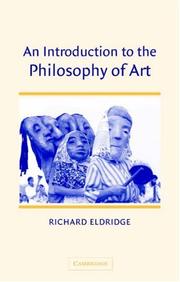
ISBN: 052180521X 0521801354 1107130387 0511077890 0511557302 1139164740 0511204221 0511076320 9780511077890 9780511076329 0511074786 9780511074783 9781139164740 9780521801355 9780521805216 9781107130388 9780511204227 9780511557309 Year: 2005 Publisher: Cambridge Cambridge University Press
Abstract | Keywords | Export | Availability | Bookmark
 Loading...
Loading...Choose an application
- Reference Manager
- EndNote
- RefWorks (Direct export to RefWorks)
In this book Richard Eldridge presents a clear and compact survey of philosophical theories of the nature and significance of art. Drawing on materials from classical and contemporary philosophy as well as from literary theory and art criticism, he explores the representational, expressive, and formal dimensions of art, and he argues that works of art present their subject matter in ways that are of enduring cognitive, moral, and social interest. His discussion, illustrated with a wealth of examples, ranges over topics such as beauty, originality, imagination, imitation, the ways in which we respond emotionally to art, and why we argue about which works are good. His accessible study will be invaluable to students and to all readers who are interested in the relation between thought and art.
Art --- Aesthetics --- Arts --- Beautiful, The --- Beauty --- Esthetics --- Taste (Aesthetics) --- Philosophy --- Criticism --- Literature --- Proportion --- Symmetry --- Psychology --- Arts and Humanities --- Radio broadcasting Aesthetics --- Aesthetics. --- Philosophy.
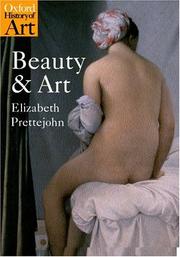
ISBN: 1280761245 0191516511 1429468696 9780191516511 9780192801609 0192801600 9781429468695 9786610761241 6610761248 9781280761249 Year: 2005 Publisher: Oxford ; New York : Oxford University Press,
Abstract | Keywords | Export | Availability | Bookmark
 Loading...
Loading...Choose an application
- Reference Manager
- EndNote
- RefWorks (Direct export to RefWorks)
What do we mean when we call a work of art `beautiful`? How do perceptions of beauty change with the passage of time? Elizabeth Prettejohn explores these crucial questions, showing the vital relationship between our changing notions of beauty and specific works of art. She charts the story of western art, from eighteenth-century Germany to the late 20th century, from Kauffman to Whistler, Ingres to Rossetti, C--eacute--;zanne to Jackson Pollock. - ;What do we mean when we call a work of art `beautiful`? How have artists responded to changing notions of the beautiful? Which works of art have be
Art --- Aesthetics. --- Beautiful, The --- Beauty --- Esthetics --- Taste (Aesthetics) --- Philosophy --- Criticism --- Literature --- Proportion --- Symmetry --- Aesthetics --- Art and philosophy --- Philosophy. --- Psychology --- Analysis, interpretation, appreciation --- Radio broadcasting Aesthetics
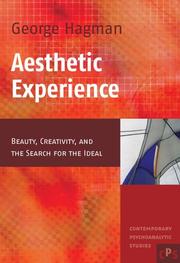
ISBN: 128300934X 9786613009340 9042033002 1423791436 9781423791430 9789042033009 9781283009348 9042018569 9789042018563 6613009342 Year: 2005 Publisher: Amsterdam Rodopi
Abstract | Keywords | Export | Availability | Bookmark
 Loading...
Loading...Choose an application
- Reference Manager
- EndNote
- RefWorks (Direct export to RefWorks)
"George Hagman looks anew at psychoanalytic ideas about art and beauty through the lens of current developmental psychology that recognizes the importance of attachment and affiliative motivational systems. In dialogue with theorists such as Freud, Ehrenzweig, Kris, Rank, Winnicott, Kohut, and many others, Hagman brings the psychoanalytic understanding of aesthetic experience into the 21st century. He amends and extends old concepts and offers a wealth of stimulating new ideas regarding the creative process, the ideal, beauty, ugliness, and -perhaps his most original contribution-the sublime.
Aesthetics. --- Psychoanalysis. --- Psychology --- Psychology, Pathological --- Beautiful, The --- Beauty --- Esthetics --- Taste (Aesthetics) --- Philosophy --- Art --- Criticism --- Literature --- Proportion --- Symmetry --- 82.01 --- 82.01 Esthetica --- Esthetica --- Aesthetics --- Radio broadcasting Aesthetics
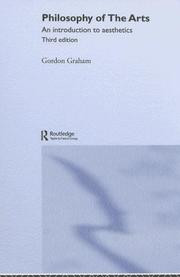
ISBN: 1280247525 9786610247523 0203696220 9780203696224 9780415349789 0415349788 9780415349796 0415349796 6610247528 0415349788 0415349796 9781134271177 9781134271214 9781134271221 1134271212 Year: 2005 Publisher: London Routledge, Taylor & Francis Group
Abstract | Keywords | Export | Availability | Bookmark
 Loading...
Loading...Choose an application
- Reference Manager
- EndNote
- RefWorks (Direct export to RefWorks)
Philosophy of the Arts presents a comprehensive and accessible introduction to those coming to aesthetics and the philosophy of art for the first time. The third edition is greatly enhanced by new sections on art and beauty, modern art, Aristotle and katharsis, and Hegel. Each chapter has been thoroughly revised with fresh material and extended discussions. As with previous editions, the book:is jargon-free and will appeal to students of music, art history and literature as well as philosophy.
Aesthetics. --- Philosophy. --- Mental philosophy --- Humanities --- Beautiful, The --- Beauty --- Esthetics --- Taste (Aesthetics) --- Philosophy --- Art --- Criticism --- Literature --- Proportion --- Symmetry --- Psychology --- Aesthetics --- Radio broadcasting Aesthetics
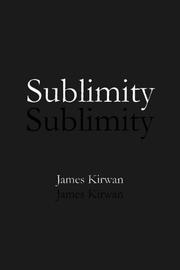
ISBN: 1135455686 0203957598 9781135455750 1135455759 9780203957592 0415966868 9780415966863 0415966876 9780415966870 9781135455682 9781135455828 Year: 2005 Publisher: New York : Routledge,
Abstract | Keywords | Export | Availability | Bookmark
 Loading...
Loading...Choose an application
- Reference Manager
- EndNote
- RefWorks (Direct export to RefWorks)
Sublimity addresses the nature of the sublime experience itself, and the function that experience has played, and continues to play, within aesthetic discourse. The book both updates and revises existing treatments of the sublime in the eighteenth century, examines its neglected role in the nineteenth century aesthetics, and analyzes the significance of the modifications the concept has undergone in order to serve the interests of contemporary aesthetics. The book thus offers the most comprehensive coverage of the history of the sublime available.
Sublime, The. --- Aesthetics. --- Beautiful, The --- Beauty --- Esthetics --- Taste (Aesthetics) --- Philosophy --- Art --- Criticism --- Literature --- Proportion --- Symmetry --- Aesthetics --- Psychology --- Sublime, The --- Radio broadcasting Aesthetics

ISBN: 0192801600 Year: 2005 Publisher: Oxford Oxford University Press
Abstract | Keywords | Export | Availability | Bookmark
 Loading...
Loading...Choose an application
- Reference Manager
- EndNote
- RefWorks (Direct export to RefWorks)
What do we mean when we call a work of art `beautiful`? How do perceptions of beauty change with the passage of time? Elizabeth Prettejohn explores these crucial questions, showing the vital relationship between our changing notions of beauty and specific works of art. She charts the story of western art, from eighteenth-century Germany to the late 20th century, from Kauffman to Whistler, Ingres to Rossetti, C--eacute--;zanne to Jackson Pollock. - ;What do we mean when we call a work of art `beautiful`? How have artists responded to changing notions of the beautiful? Which works of art have be
Art
---
Philosophy.
---
Aesthetics of art
---
anno 1700-1799
---
anno 1800-1999
---
#BIBC:ruil
| Listing 1 - 10 of 28 | << page >> |
Sort by
|

 Search
Search Feedback
Feedback About UniCat
About UniCat  Help
Help News
News